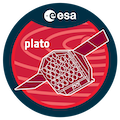Speaker
Description
Traditionally, star formation and planet formation have been studied independently. However, we now know that the first phase of stellar evolution is affected by the accretion from protoplanetary disks. Planet formation theory predicts that the composition of the gas accreted by the star must have been variable: the growth and inward drift of dust in the disk leads to a "pebble wave" of increased metallicity, followed by a phase in which the exhaustion of the pebbles and the formation of planets leads to the accretion of metal-poor gas. We discuss several results that we obtained with this approach: The low-metallicity accretion is imprinted onto our Sun’s core, which has a higher metallicity and consequently a higher temperature than predicted by standard models and yields neutrino fluxes in agreement with observations. The Sun’s anomalously low abundance in refractory species compared to solar twins may also be explained with this model by invoking that the Solar System’s giant planets are rock-rich, i.e., have a high rock-to-ice ratio. The process can also account for the low rock-to-ice ratio of lambda-Boo stars (metal-poor A-type stars) and should yield a higher scatter in the atmospheric metallicity of high-mass stars (with effective temperatures above ~7000 K). We finally discuss how we test our models with PLATO: asteroseismology will constrain the compositional gradient in the stellar interior, leading to a better understanding of the star-planet chemical connection and the processes governing planet formation.

